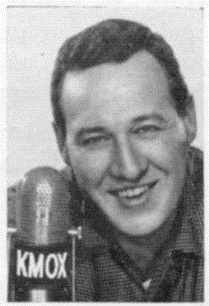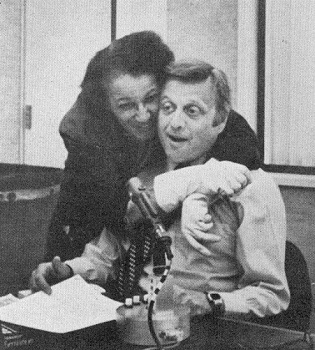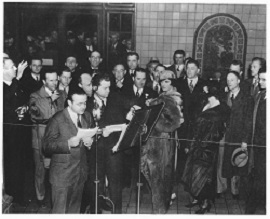Much like the proverbial cat with nine lives, Buddy Blattner proved to St. Louisans several times that one man could be successful in many careers.
Robert G. Blattner, known to his fans as “Buddy” died September 4th [2009] after suffering from lung cancer. He was 89. Although many remember him as the announcer for the St. Louis Hawks professional basketball team, Blattner excelled in many other areas before and after that part of his life.
At age 12, he would venture into John’s Pool Hall here in St. Louis where he honed his table tennis skills. It was reported the kids would put slabs of wood atop the pool tables to use them for table tennis. The pool hall on Natural Bridge may not have been the ideal spot for a youngster to hang out, but Blattner became a world champion at the craft while he was a student at Beaumont High School.

By graduation his prowess at baseball was also becoming apparent. He became a part of the Cardinals organization and moved up to the Majors in the 1942 season. He got to play in only 19 games, though, before he was drafted into the military, serving the Navy in the Pacific. The Cardinals went on to win the World Series that year, prompting Buddy Blattner to quip, “The team said I sparked them to the pennant by going into the service.”
After the war at age 26, Blattner played 3 more seasons with the Giants and one with the Phillies, ending his career with a .247 average. Within a year he had transitioned to a different sort of baseball career.
He debuted in the broadcast booth of the St. Louis Browns in 1950, paired with another former Major Leaguer named Dizzy Dean. Blattner later acknowledged in an interview with SJR that his job was to be Dean’s straight man.
When the Browns moved to Baltimore after the 1952 season, Blattner and Dean moved their act to a national level with radio’s “Game of the Day” and television’s “Game of the Week.” And when the St. Louis Hawks pro basketball team came to St. Louis in 1955, Buddy Blattner became their radio voice.
From the booth in the rafters of the old Kiel Auditorium, Blattner broadcast 800 games for the team, and owner Ben Kerner knew how lucky he was to have Buddy on board. In 1960, when Jack Buck was fired from the Cardinals’ TV broadcast booth, Blattner took his place. It was said the move was a reward to Kerner for switching his team’s beer sponsorship from Falstaff to Budweiser.
Fans of those halcyon basketball days in St. Louis fondly recall Buddy Blattner’s voice on the booming 50,000 watts of KMOX. His familiarity with those who followed basketball was typified in his trademark phrase after a foul was called, when he would tell listeners, “They’re walking the right way,” or “They’re walking the wrong way,” depending on which team had committed the foul.
In 1959, Blattner asked to be removed from his national baseball broadcasting contracts, and after he left the Hawks, he did baseball announcing for the California Angeles and, later, the Kansas City Royals. He was founder of The Buddy Fund in 1961, a St. Louis organization that still provides sports equipment to the area’s underprivileged kids. He retired from broadcasting in 1975.
Never one to sit idle, Blattner then excelled at tennis in the Senior Olympics, earning a large collection of medals for his effort.
Perhaps one of the most valued assessments of Buddy Blattner’s work came from Jack Buck, the man whom he briefly replaced in the Cardinals’ TV booth. Without mincing words, Buck said Buddy Blattner was the greatest basketball broadcaster ever.
(Reprinted with permission of the St. Louis Journalism Review. Originally published 10/2009).

 Miriam Blue’s big break came in October of 1975 as she dusted in the KMOX studios while Jack Carney was on the air. At age 61, Miss Blue, as she was known to the staff, was a welcome sight in the studios at 1 Memorial Drive. Known for her constant upbeat approach to life, Miss Blue rode the bus from her home in East St. Louis each day. When asked how she was doing, her consistent answer was a sincere “All is well.”
Miriam Blue’s big break came in October of 1975 as she dusted in the KMOX studios while Jack Carney was on the air. At age 61, Miss Blue, as she was known to the staff, was a welcome sight in the studios at 1 Memorial Drive. Known for her constant upbeat approach to life, Miss Blue rode the bus from her home in East St. Louis each day. When asked how she was doing, her consistent answer was a sincere “All is well.”

